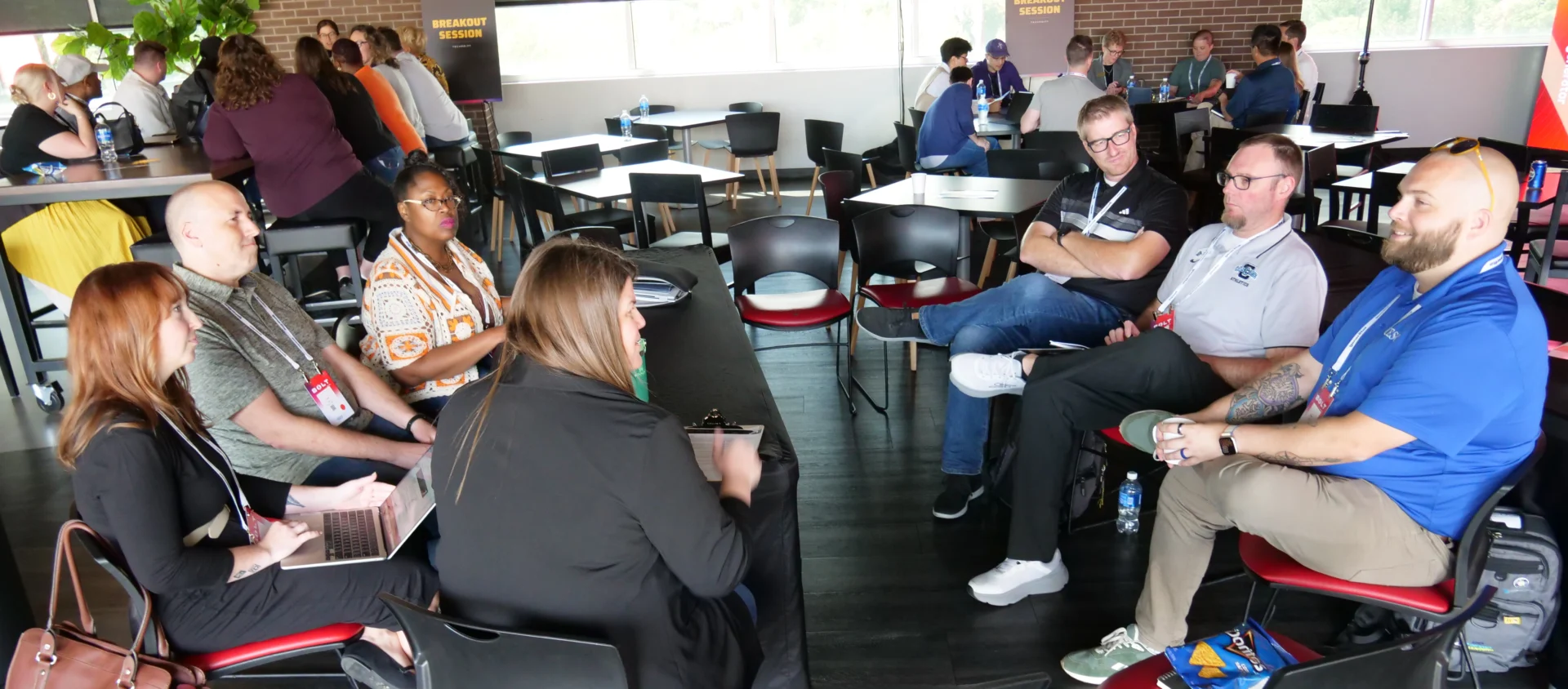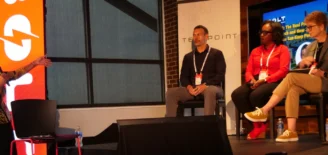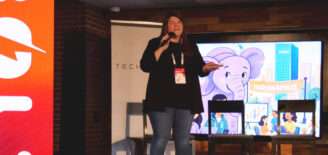At TechPoint’s talent convening at this year’s BOLT Conference, powered by gener8tor, leaders from business, education, and government came together to explore how Indiana can keep pace with the rapid changes driven by artificial intelligence and digital transformation.
Following the mainstage discussion, participants joined breakout sessions focused on five key questions shaping Indiana’s digital future. These conversations revealed practical insights, persistent challenges, and a shared optimism about what’s possible when the state’s digital innovation ecosystem works together.
Below are some of the common themes and key takeaways captured during those sessions.
AI & Digital Foundations
Where is your organization on its digital/AI journey, and what support would help you take the next step?
Across groups, participants agreed that AI adoption is uneven but accelerating. Many organizations are still experimenting or piloting tools rather than scaling them. The conversation highlighted the need for better governance, leadership buy-in, and foundational digital literacy—especially for educators and smaller organizations still finding their footing.

Key Takeaways
- Many organizations are still early in AI adoption, experimenting rather than scaling solutions.
- Some are using AI to automate processes and identify inefficiencies but want to move toward broader, system-level solutions.
- Others are experimenting with off-the-shelf AI tools while navigating privacy and compliance challenges.
- Academic and training institutions are working to integrate AI responsibly, balancing innovation with integrity.
- Workforce programs see AI as a tool to streamline mentoring and engagement.
- Many organizations are embedding AI learning goals into professional development.
- Tech literacy remains inconsistent; teams need structured, foundational instruction.
- Successful adoption often requires reframing problems before implementing AI solutions.
- Educators emphasized that teachers need time and support to learn AI alongside students.
- Fear, lack of clarity, and “permission culture” still limit experimentation.
- Participants saw AI as a bridge between education and industry—if both align on goals and outcomes.
Skills & Certifications
Which skills truly matter for your workforce today, and what role (if any) should certifications play?
Skills discussions underscored a growing shift from credentials to competencies. Participants agreed that durable skills—critical thinking, adaptability, and communication—now matter as much as, or more than, technical expertise. Certifications still play a role, but only when paired with real-world application and problem-solving experience.
Key Takeaways
- Certifications are often more relevant for managers than for entry-level professionals.
- Many early-career candidates hold credentials but lack applied experience.
- Students need earlier access to internships and hands-on projects to build real skills.
- Applied learning and problem-solving are more valuable than short or theory-heavy courses.
- Employers are placing greater emphasis on curiosity, collaboration, and attitude.
- Soft skills—including communication, adaptability, and self-management—are increasingly important.
- Post-pandemic cohorts show mixed levels of social and professional readiness.
- Educators see the need to teach students how to evaluate AI outputs and use technology critically.
- There’s no single standard for which certifications matter most, leading to confusion.
- Teachers and trainers need more time and funding to stay current with emerging tools.
- Participants emphasized the importance of lifelong learning and dedicated time for professional growth.
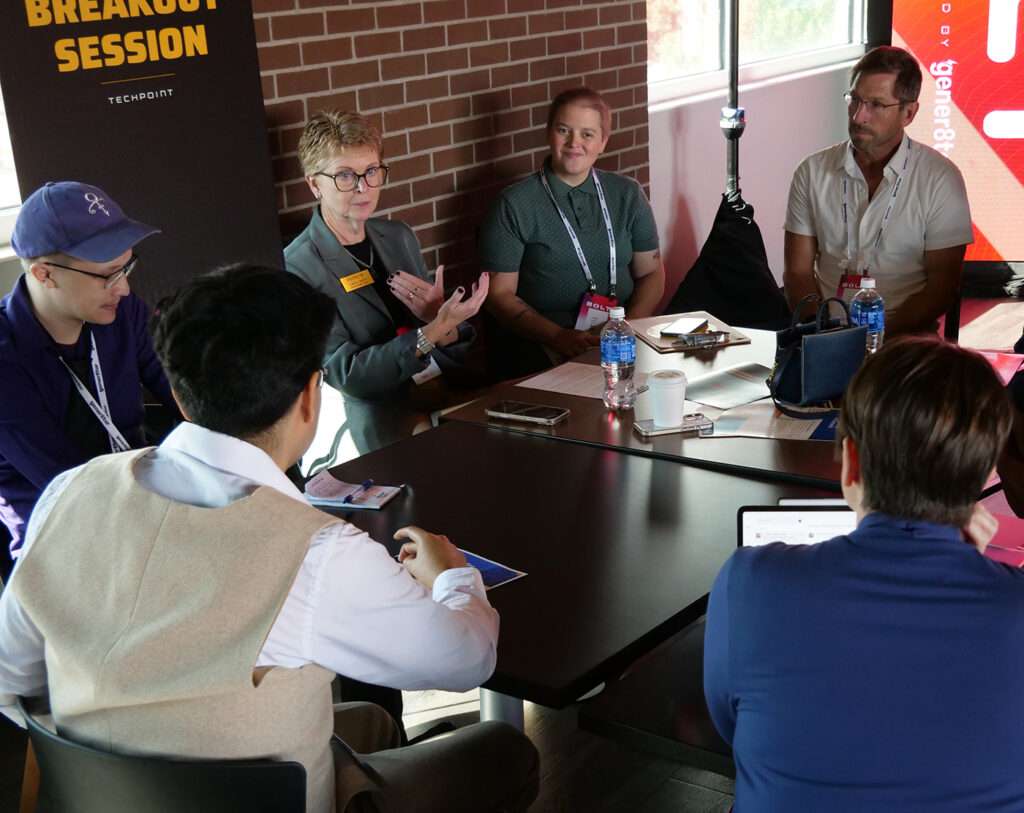
Work-Based Learning
How can employers, community partners, and educations partner more effectively to close the experience gap?
Every group identified work-based learning as a top priority. Demand for internships, apprenticeships, and project-based experiences far exceeds supply. Participants called for deeper collaboration between employers, educators, and community partners to build accessible, high-impact opportunities for students and career changers alike.
Key Takeaways
- Hands-on experience is critical for preparing talent but still too limited in availability.
- Strong partnerships between employers, educators, and community groups are essential.
- Training mentors and supervisors improves the quality of internship experiences.
- Small and mid-sized businesses often lack the structure or resources to host interns.
- Collaboration with regional organizations could help expand participation.
- Leaner management structures have reduced mentoring capacity; intentional cultivation of talent is needed.
- Co-taught, project-based learning (industry + educator) builds practical skills quickly.
- Micro-internships and short-term project experiences can supplement traditional internships.
- Funding and time remain major barriers for scaling work-based learning.
- Models such as team-based projects and short sprints show promise.
- Inclusive, supportive environments are key to participation and retention.
- Cross-generational mentorship could help connect experienced professionals with emerging talent.
- Work-based learning is the clearest way to close the experience gap, but current capacity falls short of statewide demand.
Current Challenges
What technology or talent challenges keep you up at night?
Participants cited overlapping technology and talent challenges, ranging from rapid AI advancement to slow institutional change. Digital literacy, cybersecurity, and access to professional development remain uneven. Leaders also voiced concern about sustaining workforce pipelines amid constant technological disruption.
Key Takeaways
- Rapid AI advancement is outpacing governance and policy frameworks.
- Many organizations lack clear strategies for ethical and secure adoption.
- Digital access and basic tech literacy vary widely across sectors.
- Educators face significant time constraints for upskilling.
- Workforce pipelines are strained by soft-skill gaps and retention challenges.
- Fear of falling behind on technology investments is widespread.
- Data security, privacy, and model integrity remain top concerns.
- Cyber threats and “bad actors” are evolving faster than organizations can respond.
- Outdated education funding and assessment models hinder agility.
- Misalignment persists between academic programs and real-world skill needs.
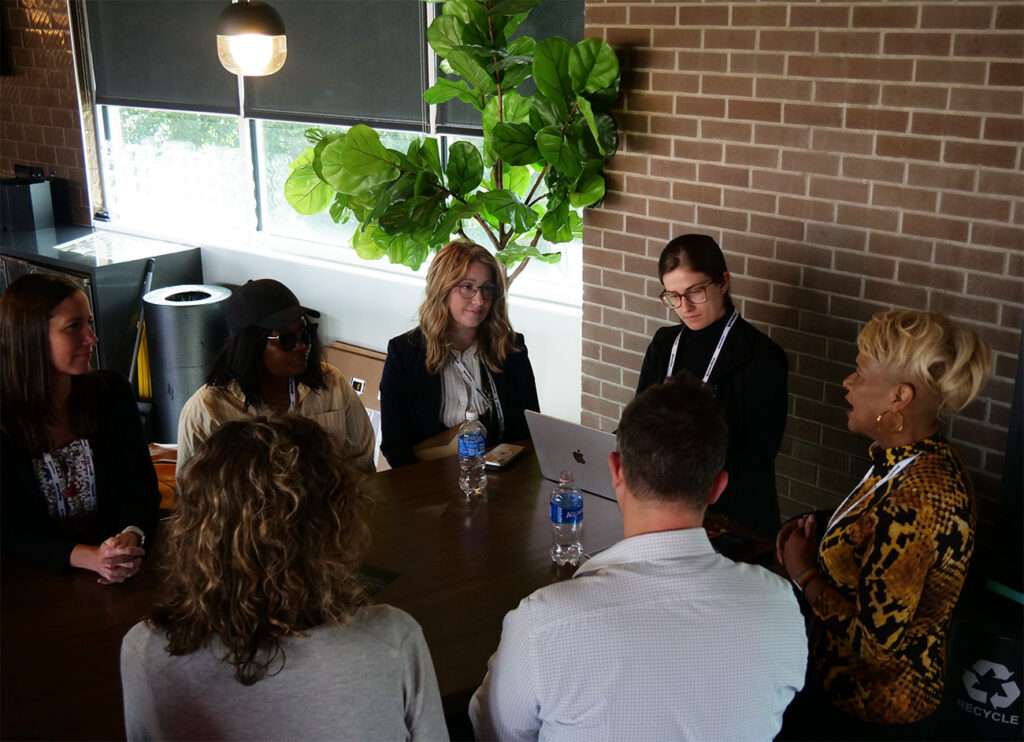
Looking Ahead
What bold step should Indiana take in the next 12 months to lead in digital adoption and talent development?
Looking ahead, participants expressed optimism that Indiana can lead in digital adoption by focusing on community, collaboration, and inclusion. The most common calls to action centered on expanding access, simplifying systems, and turning ideas into tangible programs that connect talent, education, and industry.
Key Takeaways
- Provide incentives and resources for entrepreneurship and student innovation.
- Expand convenings and community gatherings focused on digital learning and mentoring.
- Increase opportunities for educators and industry professionals to co-create curriculum.
- Make convenings outcome-driven, ensuring participants leave with action plans or partnerships.
- Develop programs that train educators to teach and apply AI responsibly.
- Strengthen sustainable work-based learning ecosystems statewide.
- Encourage curiosity, creativity, and critical thinking in both education and training.
- Address digital-infrastructure gaps to ensure equitable access.
- Build local learning communities that can scale regionally and statewide.
- Celebrate and share success stories to inspire replication and growth.
- Leverage Indiana’s close-knit community and industry diversity as a competitive advantage.
- Continue building bridges between employers of all sizes and the education system.
- Emphasize people-centered leadership and collaboration as Indiana’s digital edge.
Bringing It All Together
The conversations at BOLT reflected both urgency and alignment: Indiana’s leaders know that the pace of change won’t slow down—and that collaboration is the only way to keep up. By connecting innovators, educators, and employers around shared goals, the state can build the adaptable, inclusive tech workforce needed for the next decade of growth.
Read More From TechPoint’s Talent Convening at BOLT
How Indiana Can Lead in the Age of AI: Insights from TechPoint’s AI Workforce Report →
Key Takeaways from TechPoint’s Talent Panel at BOLT →
More From TechPoint
Explore data, insights, and actionable frameworks in AI-Driven Skills for Indiana’s Economy →

